Key Takeaways
1. Automated testing is foundational for software evolution and scalability
The adoption of developer-driven automated testing has been one of the most transformational software engineering practices at Google.
Prevention is key. Automated testing prevents bugs from escaping into production and affecting users. It also supports the ability to change software with confidence, enabling faster iteration and adaptation to evolving technologies and market conditions. At Google's scale, even a small percentage of test failures can waste enormous amounts of engineering time, making automation crucial.
Continuous improvement. Automated tests provide immediate feedback to developers, allowing them to catch and fix issues early in the development process. This rapid feedback loop accelerates development and improves overall code quality. Moreover, automated tests serve as living documentation, helping engineers understand how the system is intended to work and providing examples of proper usage.
Benefits of automated testing:
- Catches bugs early
- Enables confident changes
- Supports faster iteration
- Provides living documentation
- Scales with codebase growth
2. Effective testing balances different types and scopes of tests
At Google, we aim for a mix of about 80% unit tests and 20% broader-scoped tests.
Test pyramid strategy. Google employs a test pyramid approach, with a foundation of numerous small, fast unit tests, complemented by fewer integration tests and even fewer end-to-end tests. This strategy balances the need for quick feedback with comprehensive system validation.
Size and scope considerations. Tests are classified by size (small, medium, large) and scope (unit, integration, end-to-end). Small tests run in a single process and are fast and deterministic. Medium tests can span multiple processes but are limited to a single machine. Large tests can span multiple machines and are used for full system testing. By carefully considering the appropriate size and scope for each test, teams can optimize for both speed and thoroughness.
Test classification:
- Size: Small, Medium, Large
- Scope: Unit, Integration, End-to-End
Benefits of balanced testing: - Fast feedback from unit tests
- Comprehensive coverage from integration and end-to-end tests
- Efficient use of testing resources
3. Test maintainability is crucial for long-term productivity
Maintainable tests are ones that "just work": after writing them, engineers don't need to think about them again until they fail, and those failures indicate real bugs with clear causes.
Avoiding brittle tests. Brittle tests break in response to unrelated changes, draining productivity and morale. To prevent this, tests should be written against public APIs rather than implementation details. This approach ensures that tests fail only when there are meaningful changes to the system's behavior.
Clear and focused tests. When tests do fail, it's crucial that the cause is immediately apparent. Clear tests have a single, well-defined purpose and avoid testing multiple behaviors simultaneously. They should be complete (containing all necessary information) and concise (free from irrelevant details).
Characteristics of maintainable tests:
- Focused on public APIs
- Clear purpose
- Complete information
- Concise implementation
Benefits: - Reduced maintenance overhead
- Easier debugging
- Improved developer productivity
4. Write tests against public APIs to reduce brittleness
By far the most important way to ensure that tests don't need to change unless the requirements of the system being tested change is to write tests that invoke the system being tested in the same way its users would.
Public API focus. Testing through public APIs ensures that tests validate the system's behavior from a user's perspective. This approach makes tests more resilient to internal refactoring and changes, as long as the public contract remains the same.
Defining public APIs. The concept of a "public API" can vary depending on the unit being tested. It may include methods, classes, or entire packages that are intended for use by other parts of the system. The key is to identify the appropriate level of abstraction for each unit and test at that level.
Benefits of testing public APIs:
- Reduced test brittleness
- Better alignment with user expectations
- Easier refactoring of internal implementation
Considerations for identifying public APIs: - Intended usage by other parts of the system
- Level of abstraction appropriate for the unit
- Long-term stability of the interface
5. Strive for unchanging tests to minimize maintenance overhead
The ideal test is unchanging: after it's written, it never needs to change unless the requirements of the system under test change.
Types of code changes. Understanding the types of changes that occur in a codebase helps in writing stable tests. These include pure refactorings, new features, bug fixes, and behavior changes. Ideally, only behavior changes should require updates to existing tests.
Designing for stability. To achieve unchanging tests, focus on testing behaviors rather than implementation details. Use test doubles judiciously, preferring real objects when possible to avoid over-specifying interactions. State testing (verifying the end state) is generally more stable than interaction testing (verifying specific method calls).
Strategies for unchanging tests:
- Test behaviors, not implementation
- Use state testing over interaction testing
- Minimize use of test doubles
Benefits: - Reduced maintenance cost
- Increased confidence in refactoring
- Improved test suite longevity
6. Focus on testing behaviors rather than methods
Rather than writing a test for each method, write a test for each behavior.
Behavior-driven testing. A behavior is a guarantee that a system makes about how it will respond to inputs in a given state. Framing tests around behaviors rather than methods leads to clearer, more focused tests that are easier to maintain and understand.
Expressing behaviors. Behaviors can often be expressed using "given-when-then" statements. This format clearly defines the initial state, the action taken, and the expected outcome. By structuring tests this way, engineers can more easily identify and test all relevant scenarios.
Components of a behavior-driven test:
- Given: Initial state
- When: Action taken
- Then: Expected outcome
Advantages: - Clearer test purpose
- Easier to identify missing test cases
- More resilient to implementation changes
7. Cultivate a strong testing culture within the organization
At Google, we've found that engineers sometimes need to be persuaded that testing via public APIs is better than testing against implementation details.
Cultural shift. Establishing a strong testing culture requires ongoing effort and leadership support. At Google, this shift involved initiatives like orientation classes for new hires, the Test Certified program to improve team testing practices, and the quirky but effective "Testing on the Toilet" initiative to spread testing knowledge.
Continuous reinforcement. Maintaining a testing culture requires constant reinforcement through code reviews, team discussions, and recognition of good testing practices. It's important to demonstrate the value of testing in terms of improved productivity, code quality, and reduced maintenance costs.
Strategies for building a testing culture:
- Education and training programs
- Recognition of good testing practices
- Integration of testing into the development workflow
Benefits: - Improved code quality
- Faster development cycles
- Reduced maintenance costs
8. Leverage automation and tooling to support testing efforts
We use tools like clang-tidy (for C++) and Error Prone (for Java) to automate the process of enforcing rules.
Automated enforcement. Tools that automatically check for common errors, style violations, and other issues can significantly reduce the burden on human reviewers and catch problems early in the development process. These tools can be integrated into the development environment and continuous integration pipelines.
Custom tooling. Google has developed custom tools like TAP (Test Automation Platform) to support its testing efforts at scale. These tools help manage the complexity of running millions of tests across thousands of changes daily.
Types of automation tools:
- Static analysis tools
- Linters
- Continuous integration systems
- Custom test runners
Benefits of automation: - Consistent enforcement of rules
- Early detection of issues
- Reduced cognitive load on developers and reviewers
9. Balance human judgment with automated testing for comprehensive quality assurance
Automated testing is not suitable for all testing tasks.
Complementary approaches. While automated testing forms the foundation of Google's quality assurance efforts, certain aspects of software quality still require human judgment. This includes evaluating user experience, detecting complex security vulnerabilities, and performing exploratory testing to uncover unexpected issues.
Targeted human involvement. By automating the majority of testing tasks, human testers can focus on areas where their creativity and intuition add the most value. This might include assessing the quality of search results, evaluating audio and video quality, or searching for complex security flaws.
Areas benefiting from human judgment:
- User experience evaluation
- Complex security testing
- Exploratory testing
- Qualitative assessments (e.g., audio/video quality)
Best practices: - Automate repetitive and well-defined tests
- Reserve human effort for high-value, judgment-intensive tasks
- Use exploratory testing to complement automated tests
Last updated:
FAQ
What's Software Engineering at Google about?
- Focus on Principles: The book delves into the principles and practices of software engineering at Google, emphasizing sustainability, collaboration, and long-term code maintenance.
- Integration Over Time: It defines software engineering as "programming integrated over time," highlighting the need for code to adapt to changes throughout its lifespan.
- Cultural Insights: The authors provide insights into Google's unique culture, processes, and tools, offering a blueprint adaptable by other organizations.
Why should I read Software Engineering at Google?
- Learn from Experience: The book compiles lessons from Google's extensive software engineering experience, offering valuable insights to improve practices in any organization.
- Adaptable Practices: It provides adaptable practices suitable for different team sizes and project scopes, making it relevant for a wide audience.
- Sustainability Focus: Readers will learn how to create sustainable codebases and engineering practices that withstand the test of time.
What are the key takeaways of Software Engineering at Google?
- Three Fundamental Principles: Emphasizes Time and Change, Scale and Growth, and Trade-offs and Costs as essential for sustainable software engineering.
- Collaborative Culture: Highlights the significance of a collaborative culture, stating that "the development of software is a team effort."
- Continuous Improvement: Advocates for continuous improvement in engineering practices, encouraging teams to learn from failures and iterate on their processes.
What is the definition of software engineering according to Software Engineering at Google?
- Programming Over Time: Defined as "programming integrated over time," encompassing writing, maintaining, and adapting code throughout its lifecycle.
- Sustainability Focus: Emphasizes practices ensuring code remains valuable and adaptable over time, addressing long-term maintenance challenges.
- Team Collaboration: Highlights the collaborative nature of software engineering, with multiple engineers contributing to complex systems.
What is Hyrum's Law, and why is it important in Software Engineering at Google?
- Definition: Hyrum's Law states, "With a sufficient number of users of an API, it does not matter what you promise in the contract: all observable behaviors of your system will be depended on by somebody."
- Maintenance Challenges: Underscores the challenges of maintaining software over time, as changes to APIs can have unforeseen consequences for users.
- API Design Guidance: Helps engineers design APIs robust and flexible enough to accommodate future changes without breaking existing functionality.
How does Google approach knowledge sharing within teams according to Software Engineering at Google?
- Culture of Learning: Emphasizes creating a culture where team members feel safe to ask questions and share knowledge.
- Mentorship Programs: Assigns mentors to new employees (Nooglers) to help them navigate the organization and learn from experienced colleagues.
- Diverse Mechanisms: Uses group chats, mailing lists, and internal documentation to facilitate knowledge sharing and ensure expertise is accessible.
What are the best practices for leading a team according to Software Engineering at Google?
- Servant Leadership: Advocates for leaders prioritizing team needs and removing obstacles to their success.
- Psychological Safety: Stresses creating an environment where team members feel safe to express ideas and concerns, crucial for collaboration and innovation.
- Clear Goals: Leaders should establish clear goals and priorities, ensuring alignment and focus on common objectives.
How does Google measure engineering productivity in Software Engineering at Google?
- Data-Driven Culture: Employs a data-driven approach to measure productivity, focusing on identifying inefficiencies and improving processes.
- GSM Framework: Introduces the Goals/Signals/Metrics framework to guide the selection of meaningful metrics aligned with desired outcomes.
- Continuous Improvement Loop: Measurement is part of a continuous improvement loop, using insights to refine practices and enhance productivity.
What is the role of code reviews in Software Engineering at Google?
- Quality Assurance: Code reviews are mandatory, ensuring every change is vetted by another engineer to catch bugs and improve quality.
- Knowledge Sharing: Facilitate knowledge transfer, allowing team members to learn from each other and understand different codebase parts.
- Cultural Reinforcement: Reinforces a culture of collaboration and collective code ownership, making it a shared responsibility.
How does Google approach testing in software development according to Software Engineering at Google?
- Automated Testing: Emphasizes developer-driven automated testing, allowing engineers to catch bugs early and maintain code confidence.
- Test Types: Categorizes tests into small, medium, and large, each serving different purposes and providing varying fidelity and speed.
- Continuous Integration: Employs a robust continuous integration system running tests frequently, ensuring quick issue identification and resolution.
What is the "Beyoncé Rule" mentioned in Software Engineering at Google?
- Testing Philosophy: States, “If you liked it, then you shoulda put a test on it,” emphasizing that any desired behavior should have an associated test.
- Comprehensive Testing: Encourages proactive testing, ensuring all important behaviors are validated through automated tests.
- Cultural Impact: Reflects the broader testing culture at Google, where testing is integral to the development process.
What is the "cattle versus pets" analogy in Software Engineering at Google?
- Server Management Philosophy: Illustrates treating servers as interchangeable cattle rather than individual pets requiring care.
- Automation and Resilience: Emphasizes automation in server management, allowing quick recovery from failures without manual intervention.
- Scalability: Adopting a "cattle" mindset enables effective infrastructure scaling, reducing operational burdens and improving reliability.
Review Summary
Software Engineering at Google receives mostly positive reviews, with an average rating of 4.2/5. Readers appreciate the insights into Google's engineering practices and culture. Many find value in the book's coverage of topics like code reviews, testing, and large-scale changes. Some criticize its Google-centric focus and lack of practical implementation details for smaller companies. The book is praised for its thorough exploration of software engineering principles, though some chapters are considered less engaging. Overall, it's recommended for both experienced engineers and those new to the field.
Similar Books



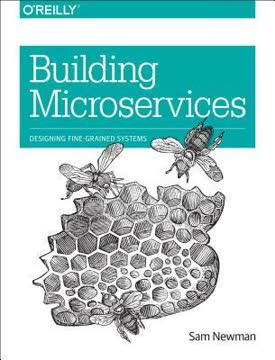
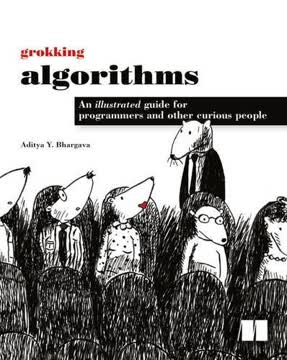
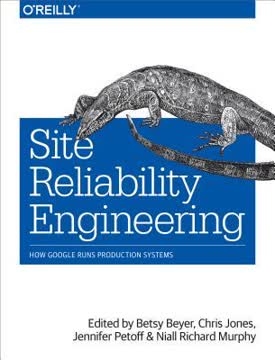
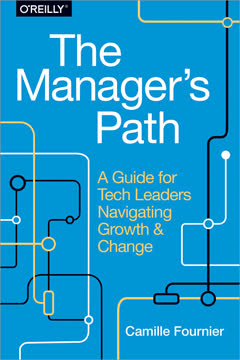


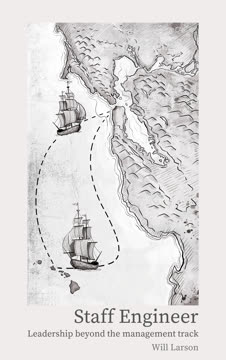
Download PDF
Download EPUB
.epub digital book format is ideal for reading ebooks on phones, tablets, and e-readers.




